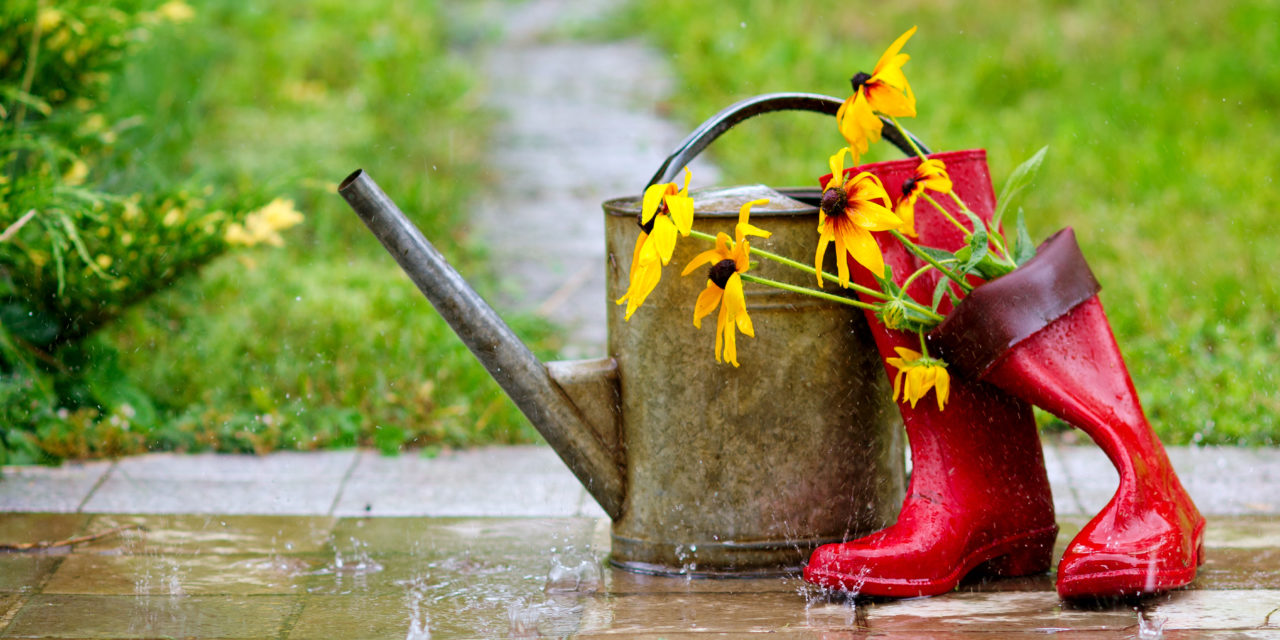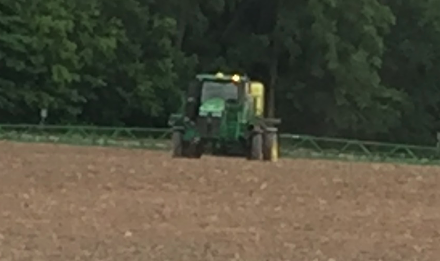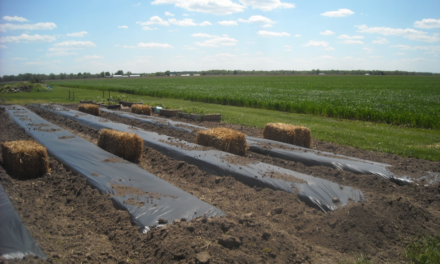In my area, we’ve had significant flooding for the past five years. Will the rain ever stop? Another wet spring caused many gardeners to wonder if they are going to be able to get a crop in before the heat of summer. An abundance of rain is better, in my opinion than the severe drought. I finally have a dry basement. Yes, we got a sump pump that could withstand the high water-table here from Buchheit. No plaster is falling off the ceilings here as some of my friends are experiencing due to leaking roofs. For all the pitfalls to water, I still prefer it a drought. We went to California during the height of their drought. There were no flowers, no gardens, no grass, nothing green that was not a succulent. So, what are gardeners to do with flooded gardens and washed out plantings?

Here is my garden plot. It’s tiny by my standards as we are moving to the new homestead. I planted it early. See how the mounds of dirt that should be hosting luscious young squash plants have been beaten down by the torrential rains and high winds? The seeds are just lying there, exposed to the elements.

How about the green beans and the spotted lima beans? Just that one plant came up. The okra and the onion seeds were beaten deep into the soil that will take quite some time to dry out if we didn’t have more rain coming. I have probably lost my entire first planting. That’s the gamble you take when you plant early. It makes for the first tender green beans when it works, but when it doesn’t, you just replant. It’s all part of the learning curve with gardening. Time to return to the seed displays at Buchheit for seeds for the second round.

I planted some cold crops in early March. Here is one of my favorite devices that protect tender plants from the intense wind shear here on the prairie. My husband, Jim, came up with the idea after he was given some large sewage pipe. He put on his safety glasses and using a sharp saw, cut the long pipe into usable lengths. These are over ten years old but work just as well as the first season. They never blow over no matter how strong the wind. See how the soil is washed up the side of the tube while the plant inside its protection is thriving?

He also cut up some 5-gallon buckets since I sometimes plant 40 to 50 early broccoli and cabbage plants in spring. I will drape the pipes and buckets with row cover before the small cabbage white butterfly (Pieris rapae) makes its appearance soon. I can cut row cover to length and stick them under the pipes and buckets, and no pests can penetrate the barrier. As the cabbage and broccoli grow, I will still leave this protection in place. I had whole crops of broccoli and brussel sprouts blown over and uprooted before I started using this system of protection. I never have to worry about cutworms either.
What to do with the rest of the ground garden? Wait. That’s all I can do. The ground garden must wait until this very wet spring runs its course and dry weather hits. But when it does, I will be ready. Until then, the tomatoes and peppers and eggplant will continue to thrive in my garden window. When the temperature of garden soil reaches a consistent 65 degrees, it’s unwise to set out tomatoes. All they do is shiver in the cold. Some tomato varieties are unable to recover from frigid temperature stress fully.
I know some of you compete with your neighbors to have the bragging rights to the first juicy tomato of the year. Go ahead and plant your tomatoes. I am out for maximum harvest so mine will wait until warmer weather.
I finished planting my containers like these filled with green onions and potatoes planted on St. Patrick’s Day. My early spinach is heading up, and I am getting ready to fill several containers with New Zealand Spinach which is not spinach but tastes like it. It can stand up to the changing length of day that causes spinach in even these cold conditions to bolt.

I hope we all can get into our ground gardens soon. While you wait, why not read some of my blogs on container gardening. I hope this was encouraging!
Be blessed! Anne May






